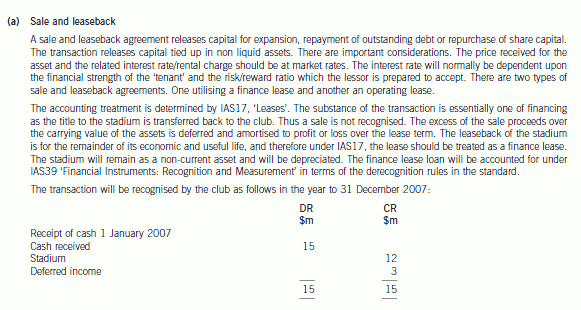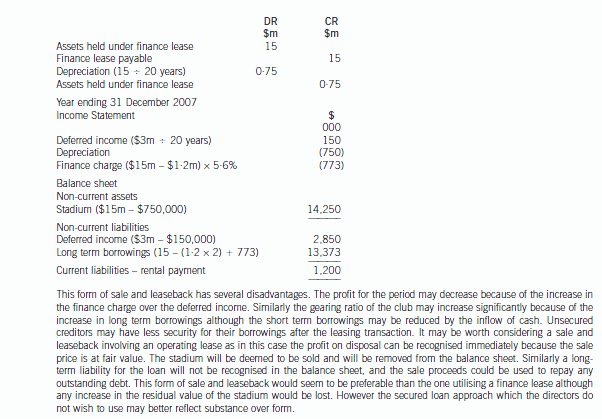ACCA2019-2020MA(F2)考试大纲,速看!
发布时间:2019-07-19
2019-2020年的考试大纲已经上线了,小编特地整理了MA(F2)科目的考纲变动细节情况给大家,具体内容如下。
一、科目关联(Relation Diagram)
Management Accounting(MA)《管理会计》课程中的相关知识首先与Performance Management(PM)《业绩管理》和Advanced
Performance Management(APM)《高级业绩管理》这两门科目中的知识有所关联。此外,还会涉及到一定的Strategic Business Leader(SBL)《战略商业报告》。
而在MA课程中学到的知识,将会运用到学员后续高阶课程的PM以APM科目的学习中。MA课程中的Part B最后一章节Alternative costing methods会出现在PM的Part A,Part E有关Performance management的部分会出现在PM以及APM课程里。
MA课程中为之后的PM课程以及高阶必修的SBR课程打下基础。而MA课程直接承接的是PM,二者紧密关联,MA培养学员基础的管理会计技巧和认知,PM以及APM则培养学员更高级、真实的业绩管理能力。所以对于后期选修对APM有兴趣的学员来说,MA更是极为重要的一门科目!
二、新课程框架和新考纲(New Framework and Syllabus)
整体变化是增加了一个版块,这个版块整合了关于Date analysis and
statistical techniques的内容,同时又新增了一些这个内容的其他知识点。
第一个变化
新增版块Data analysis and statistical techniques成为了Part B部分。但是其他版块内容不变,以此往后顺延。由原来的Part A-Part E
5个Part的内容;变成了现在Part A-Part F 6个Part的内容。
第二个变化
将原来考纲Part C Budgeting中的Statistical
techniques这个知识点放在了新考纲Part B Data analysis and
statistical techniques的Forecasting techniques中。
第三个变化
新增了一部分的知识点。一个是Big data and analysis,放在了Part A The nature,source and purpose ofmanagement information的Sources of data中;一个是Summarising
and analysing data,放在了Part B Date analysis and
statistical technique。
对于此次考纲的调整,可以看出对Date analysis and statistical
techniques进行了一个整合。内容基本不变,我们主要看的就是新增的知识点。
三、新增知识点1:Big data and analysis
考纲要求的是Describe the main uses of big data
andanalytics for organisations。那也就是需要大家知道和分析大数据在企业中的用途。考试依然最多是以选择题形式进行考察。
四、新增知识点2:Summarising and analysing data
考纲要求:
a)Calculate the mean,mode and median
forungrouped data and the mean for groupeddata.
b)Calculate measures of dispersion
including thevariance,standard deviation and coefficient ofvariation both
grouped and ungrouped data.
c)Calculate expected values for use in
decisionmaking.
d)Explain the properties of a
normaldistribution.
e)Interpret normal distribution graphs and
tables
那么要求大家掌握的就是对均值、中位数、离散度、标准差、变异系数、均值及期望值等的计算。对正太分布图,要了解它的性质并能够解读其中的含义。考试通常会以计算分析等形式进行考察。
关于考试:
五、MA课程考试形式和分值分布:
Section A是35道2分的填空选择,一共70分;Section
B是3道大题,每题10分,各来自Part C、D、E,也是填空选择的形式。
综合以上就是关于MA的考纲变化详情,希望能对各位小伙伴有用。
下面小编为大家准备了 ACCA考试 的相关考题,供大家学习参考。
3 Seejoy is a famous football club but has significant cash flow problems. The directors and shareholders wish to take
steps to improve the club’s financial position. The following proposals had been drafted in an attempt to improve the
cash flow of the club. However, the directors need advice upon their implications.
(a) Sale and leaseback of football stadium (excluding the land element)
The football stadium is currently accounted for using the cost model in IAS16, ‘Property, Plant, and Equipment’.
The carrying value of the stadium will be $12 million at 31 December 2006. The stadium will have a remaining
life of 20 years at 31 December 2006, and the club uses straight line depreciation. It is proposed to sell the
stadium to a third party institution on 1 January 2007 and lease it back under a 20 year finance lease. The sale
price and fair value are $15 million which is the present value of the minimum lease payments. The agreement
transfers the title of the stadium back to the football club at the end of the lease at nil cost. The rental is
$1·2 million per annum in advance commencing on 1 January 2007. The directors do not wish to treat this
transaction as the raising of a secured loan. The implicit interest rate on the finance in the lease is 5·6%.
(9 marks)
Required:
Discuss how the above proposals would be dealt with in the financial statements of Seejoy for the year ending
31 December 2007, setting out their accounting treatment and appropriateness in helping the football club’s
cash flow problems.
(Candidates do not need knowledge of the football finance sector to answer this question.)


(d) Draft a letter for Tim Blake to send to WM’s investors to include the following:
(i) why you believe robust internal controls to be important; and
(ii) proposals on how internal systems might be improved in the light of the overestimation of mallerite at
WM.
Note: four professional marks are available within the marks allocated to requirement (d) for the structure,
content, style. and layout of the letter.
(16 marks)

You will be aware of the importance of accurate resource valuation to Worldwide Minerals (WM). Unfortunately, I have to
inform. you that the reserve of mallerite, one of our key minerals in a new area of exploration, was found to have been
overestimated after the purchase of a mine. It has been suggested that this information may have an effect on shareholder
value and so I thought it appropriate to write to inform. you of how the board intends to respond to the situation.
In particular, I would like to address two issues. It has been suggested that the overestimation arose because of issues with
the internal control systems at WM. I would firstly like to reassure you of the importance that your board places on sound
internal control systems and then I would like to highlight improvements to internal controls that we shall be implementing
to ensure that the problem should not recur.
(i) Importance of internal control
Internal control systems are essential in all public companies and Worldwide Minerals (WM) is no exception. If anything,
WM’s strategic position makes internal control even more important, operating as it does in many international situations
and dealing with minerals that must be guaranteed in terms of volume, grade and quality. Accordingly, your board
recognises that internal control underpins investor confidence. Investors have traditionally trusted WM’s management
because they have assumed it capable of managing its internal operations. This has, specifically, meant becoming aware
of and controlling known risks. Risks would not be known about and managed without adequate internal control
systems. Internal control, furthermore, helps to manage quality throughout the organisation and it provides
management with information on internal operations and compliance. These features are important in ensuring quality
at all stages in the WM value chain from the extraction of minerals to the delivery of product to our customers. Linked
to this is the importance of internal control in helping to expose and improve underperforming internal operations.
Finally, internal control systems are essential in providing information for internal and external reporting upon which, in
turn, investor confidence rests.
(ii) Proposals to improve internal systems at WM
As you may be aware, mineral estimation and measurement can be problematic, particularly in some regions. Indeed,
there are several factors that can lead to under or overestimation of reserves valuations as a result of geological survey
techniques and regional cultural/social factors. In the case of mallerite, however, the issues that have been brought to
the board’s attention are matters of internal control and it is to these that I would now like to turn.
In first instance, it is clear from the fact that the overestimate was made that we will need to audit geological reports at
an appropriate (and probably lower) level in the organisation in future.
Once a claim has been made about a given mineral resource level, especially one upon which investor returns might
depend, appropriate systems will be instituted to ask for and obtain evidence that such reserves have been correctly and
accurately quantified.
We will recognise that single and verbal source reports of reserve quantities may not necessarily be accurate. This was
one of the apparent causes of the overestimation of mallerite. A system of auditing actual reserves rather than relying
on verbal evidence will rectify this.
The purchase of any going concern business, such as the mallerite mine, is subject to due diligence. WM will be
examining its procedures in this area to ensure that they are fit for purpose in the way that they may not have been in
respect of the purchase of the mallerite mine. I will be taking all appropriate steps to ensure that all of these internal
control issues can be addressed in future.
Thank you for your continued support of Worldwide Minerals and I hope the foregoing goes some way to reassure you
that the company places the highest value on its investors and their loyalty.
Yours faithfully,
Tim Blake
Chairman
Glove Co makes high quality, hand-made gloves which it sells for an average of $180 per pair. The standard cost of labour for each pair is $42 and the standard labour time for each pair is three hours. In the last quarter, Glove Co had budgeted production of 12,000 pairs, although actual production was 12,600 pairs in order to meet demand.
37,000 hours were used to complete the work and there was no idle time. The total labour cost for the quarter was $531,930.
At the beginning of the last quarter, the design of the gloves was changed slightly. The new design required workers to sew the company’s logo on to the back of every glove made and the estimated time to do this was 15 minutes for each pair. However, no-one told the accountant responsible for updating standard costs that the standard time per pair of gloves needed to be changed. Similarly, although all workers were given a 2% pay rise at the beginning of the last quarter, the accountant was not told about this either. Consequently, the standard was not updated to reflect these changes.
When overtime is required, workers are paid 25% more than their usual hourly rate.
Required:
(a) Calculate the total labour rate and total labour efficiency variances for the last quarter. (2 marks)
(b) Analyse the above total variances into component parts for planning and operational variances in as much detail as the information allows. (6 marks)
(c) Assess the performance of the production manager for the last quarter. (7 marks)
(a)BasicvariancesLabourratevarianceStandardcostoflabourperhour=$42/3=$14perhour.Labourratevariance=(actualhourspaidxactualrate)–(actualhourspaidxstdrate)Actualhourspaidxactualrate=$531,930.Actualhourspaidxstdrate=37,000x$14=$518,000.Thereforeratevariance=$531,930–$518,000=$13,930ALabourefficiencyvarianceLabourefficiencyvariance=(actualproductioninstdhours–actualhoursworked)xstdrate[(12,600x3)–37,000]x$14=$11,200F(b)PlanningandoperationalvariancesLabourrateplanningvariance(Revisedrate–stdrate)xactualhourspaid=[$14·00–($14·00x1·02)]x37,000=$10,360A.LabourrateoperationalvarianceRevisedratexactualhourspaid=$14·28x37,000=$528,360.Actualcost=$531,930.Variance=$3,570A.Labourefficiencyplanningvariance(Standardhoursforactualproduction–revisedhoursforactualproduction)xstdrateRevisedhoursforeachpairofgloves=3·25hours.[37,800–(12,600x3·25)]x$14=$44,100A.Labourefficiencyoperationalvariance(Revisedhoursforactualproduction–actualhoursforactualproduction)xstdrate(40,950–37,000)x$14=$55,300F.(c)AnalysisofperformanceAtafirstglance,performancelooksmixedbecausethetotallabourratevarianceisadverseandthetotallabourefficiencyvarianceisfavourable.However,theoperationalandplanningvariancesprovidealotmoredetailonhowthesevarianceshaveoccurred.Theproductionmanagershouldonlybeheldaccountableforvarianceswhichhecancontrol.Thismeansthatheshouldonlybeheldaccountablefortheoperationalvariances.Whentheseoperationalvariancesarelookedatitcanbeseenthatthelabourrateoperationalvarianceis$3,570A.Thismeansthattheproductionmanagerdidhavetopayforsomeovertimeinordertomeetdemandbutthemajorityofthetotallabourratevarianceisdrivenbythefailuretoupdatethestandardforthepayrisethatwasappliedatthestartofthelastquarter.Theovertimeratewouldalsohavebeenimpactedbythatpayincrease.Then,whenthelabourefficiencyoperationalvarianceislookedat,itisactually$55,300F.Thisshowsthattheproductionmanagerhasmanagedhisdepartmentwellwithworkerscompletingproductionmorequicklythanwouldhavebeenexpectedwhenthenewdesignchangeistakenintoaccount.Thetotaloperatingvariancesaretherefore$51,730Fandsooverallperformanceisgood.Theadverseplanningvariancesof$10,360and$44,100donotreflectontheperformanceoftheproductionmanagerandcanthereforebeignoredhere.
声明:本文内容由互联网用户自发贡献自行上传,本网站不拥有所有权,未作人工编辑处理,也不承担相关法律责任。如果您发现有涉嫌版权的内容,欢迎发送邮件至:contact@51tk.com 进行举报,并提供相关证据,工作人员会在5个工作日内联系你,一经查实,本站将立刻删除涉嫌侵权内容。
- 2020-01-03
- 2020-02-21
- 2020-08-08
- 2020-03-13
- 2020-03-01
- 2020-03-05
- 2020-03-13
- 2021-05-02
- 2020-03-14
- 2019-07-19
- 2020-03-13
- 2020-08-08
- 2020-04-19
- 2020-03-12
- 2019-07-19
- 2019-07-19
- 2020-03-01
- 2021-05-02
- 2020-03-13
- 2020-01-03
- 2020-03-05
- 2020-03-13
- 2020-03-01
- 2020-03-13
- 2019-07-19
- 2020-03-11
- 2019-07-19
- 2020-03-04
- 2020-03-02
- 2020-03-13